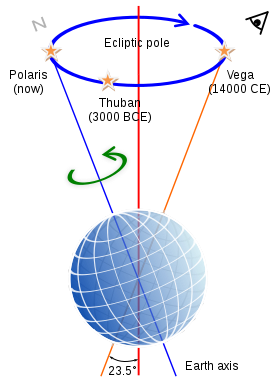Ancient World
THE ANCIENT WORLD IN THE
BIBLE
Published on October 1, 2020
by Willie Mc Loud & Johan Coetser
Ancient Middle Eastern man had a remarkably sophisticated view of the world. This is reflected in their worldview. If we want to gain a better understanding of the Bible, or any ancient text for that matter, it is imperative to also engage with the ancient worldview underlying those authors’ texts.
It is often said that the Bible is a “pre-scientific” document. What is frequently meant by this is that we cannot take the Bible all too seriously. If the Biblical authors did not have a scientific viewpoint, they could not have understood the world “correctly”. On the other hand, some readers of the Bible, under the impression that they “defend” the Bible, read our current scientific perspective back into the Bible. This has the unfortunate outcome that they make claims about things, not speaking of miracles, spoken of in the Bible that no scientifically minded person will ever accept.
In the pursuit of good interpretation, it is of the utmost importance to have some kind of understanding of the ancient milieu and world from which the Bible originated. This will help us to navigate between these two dangerous rocks of unbelief and unreasonable belief. It will bring us closer to the truth. In fact, both these groups of readers might be surprised to know how sophisticated the ancients actually were.
Building a Bridge to the Past
It so often happens that both those who accentuate the “pre-scientific” and ancient nature of the Bible, on the one hand, and those who (often subconsciously) read the Bible “scientifically” as if it was written yesterday, on the other hand, has one thing in common: They have not done an in-depth study of the ancient worldview that was held by the authors of the Bible. As those people lived thousands of years ago, it is quite logical and understandable that there is a large time and cultural distance between the authors of the Bible and us, modern man. It is important that we engage with this problem.
In the same way that missionaries to indigenous peoples face a massive challenge in overcoming the cultural “distance” between them and those peoples, all readers of the Bible face a similar challenge in understanding the meaning of expressions and descriptions found in it. It is surely true that we can read and believe the Bible like children, so to say, with curiosity and a sense of wonder, but it is also true that any substantial and more sophisticated study of the Bible need to engage with this aspect, namely that it originates in and comes from an ancient world in which people held views about the cosmos very different from our own.
Good interpretation of the Bible starts with being aware of the ancient world from which it originated and taking it into account. Interpretation is to build a bridge, so to say, from our perspective over the temporal and cultural distance separating our worlds, as the great philosopher of hermeneutics (i.e. the discipline of interpretation), Hans-George Gadamer, says: “[W]e define the task of hermeneutics as the bridging of personal or historical distance between minds” (Truth and Method, p95; my accentuation). Bridging the gap is certainly possible as we have a continuous tradition going all the way back to the authors of the Bible, supported by a great many extra-Biblical texts from that world.
Building a bridge always takes a huge amount of effort. If we, however, want to understand something about the ancient world from which the Bible originated, we simply have to make that effort, an effort to get acquainted with it.
Often modern scholars perceive themselves as sophisticated, whilst regarding the ancients as very primitive and unsophisticated. As a consequence, they then ascribe crude and inappropriate ideas to those ancient people. Although the ancients were obviously not sophisticated in the scientific sense of the word, they were quite sophisticated on the level of phronesis or “practical wisdom”, to borrow an expression from the Greek philosopher, Aristotle. At the same time, their worldview was remarkably sophisticated.
The truth of the matter is that such scholars, in actual fact, harbour a primitive view about sophisticated people; instead of reflecting something of the views of the ancients, their view only embodies their own preconceived ideas about those people! This is why it is important that we take care not to give credence to or unqualifyingly accept all kinds of so-called “learned opinions” about those people, opinions viewing them as “primitive” and in effect unintelligent and unable to teach modern man anything. We should, instead, engage with the ancients and their worldview in a respectful and sophisticated manner. One of the purposes of CoreIdeas is to provide inquisitive readers with essays about this subject. Let us consider a few markers pointing the way.
The Ancient Worldview
What is quite interesting about the ancient Middle Eastern people (and most other ancient civilisations) was their keen ability to closely observe the world around them. In the Book of Proverbs, we see how King Solomon’s close and careful observation of people allowed him to produce these proverbs, capturing deep truths about human nature, truths which are as relevant and applicable today as it was in his day. The ancients also carefully observed nature. Their “science” was based on two things: Observation and experience. Their way of speaking and expressing themselves were based on that which they observed with the result that it is often unclear to us. In those instances, we do not understand their intensions and what they exactly meant.
Let us take the term “world”, or “earth”, as an example. For the ancients, the “world” was their local environment and the well-known, in other words the known world. What little they knew about far off lands were shrouded in mystery and myth. The reason for this was simple: They could move no faster than the speed of a horse, donkey or a sailing ship. They simply did not have our modern geographical reach and knowledge. Accordingly, when we read that the “whole earth” came to Joseph in Egypt to buy grain, it will be extraordinary to think that the author implied that people also came from South America, for example. The same holds true for other references to the “whole world” throughout Scripture; it is simply wrong to hold or apply the modern scientific concept of the whole world or earth to the Biblical text. Those people clearly did not have the same conceptual horizon and perspective of the “whole world” that we have today.
The ancients observed nature in a way that modern people no longer do. We no longer spend nights watching the stars circling above our heads in the heavens. In the night sky, they observed the stars rising in the east, continuing their circuits through the celestial skies above until they descended in the west.
Strange but very observable, there is one point in the northern sky that does not seem to move together with the other stars. To the earthly observer, it looks as if the entire “cosmos” rotates around this fixed point. This point is the celestial North Pole, which was especially noticeable when the “cosmic axis” pointed at the “polar star”, situated at the northern pole of the heavens (as is the case again in our day). Today, we know that this strange feature originates from a projection of the earth’s axis into heaven. This, however, does not make their observational point of view and the images they used to describe this celestial occurrence invalid.
The ancients described this phenomenon through various beautiful and descriptive images, comparing it to a rope, a ladder and a “cosmic” tree. Have you ever wondered what Jacob’s vision in Genesis 28: 10-12 about the ladder meant? It was simply another metaphorical description of the cosmic axis. They also told stories about a tree that spanned the totality of the cosmos, with its roots in the underworld and its branches encompassing the heavens. We find this description, for example, in the Book of the Prophet Ezekiel:
“3 Indeed Assyria was a cedar in Lebanon,
With fine branches that shaded the forest, And of high stature;
And its top was among the thick boughs.
4 The waters made it grow;
Underground waters gave it height,
With their rivers running around the place where it was planted,
And sent out rivulets to all the trees of the field.
5 ‘Therefore its height was exalted above all the trees of the field;
Its boughs were multiplied,
And its branches became long because of the abundance of water,
As it sent them out.
6 All the birds of the heavens made their nests in its boughs;
Under its branches all the beasts of the field brought forth their young;
And in its shadow all great nations made their home.”
Scholars, who are unfamiliar with the ancient worldview, often interpret this simply as a metaphor describing an ancient king. But it is most definitely not. It was a well known image which is also found in the Gilgamesh Epic and elsewhere in ancient literature from as early on as the early second millennium BC.
What is more is that the vivid image of this tree having been cut down also stems from their observation of the night sky: When the cosmic axis moved away from the polar star due to a process called the precession of the poles (something most people today have not even heard about!), the ancients described it as a massive tree having been cut down. Clearly, the joke is on us, modern humanity.
One more example pertaining to the celestial skies will illustrate this point. In the Book of Job and elsewhere in Scripture, we read about the “corners/quarters of the earth” (Job 37:3; 38:13), also called the four “corners/quarters of heaven” (Jer. 39:36). Another expression referring to the same concept is the “pillars of the earth” or the “pillars of heaven”. In this instance, however, we read that these pillars “tremble”: “He shakes the earth out of its place, And its pillars tremble” (Job 9: 6), and “The pillars of heaven tremble” (Job 26:11).
What does this actually mean? It becomes crystal clear when we recall that the ancients observed the stars closely over long periods of time. During the vernal equinox one of the signs of the zodiac is visible on the eastern horizon just before dawn with the sun rising within this sign. The same happens during the autumnal equinox and the summer and winter solstices, every time in a different sign of the zodiac. For approximately two thousand two hundred years at a time, these four positions do not change. This stable celestial pattern, with four celestial points marking the two equinoxes and two solstices, gave rise to the idea or image of four pillars, the four pillars of the earth/heaven. The expression, “pillars of heaven”, gives the game away, namely that they are observed in the celestial skies.
This however, is not the end of the story. After every two thousand two hundred years, the sun moves from one sign in the zodiac to the next one due to the cyclic precession of the earth’s axis of rotation and the consequential process of the precession of the poles and equinoxes. This celestial event was observed in the time of Abraham (actually somewhat earlier) as well as in the time of Jesus. It explains what is meant by “the pillars of heaven tremble” in the afore-mentioned verse. When this shift took place the ancient people, who observed it, describe this cosmic event as the pillars of the earth/heaven trembling or the earth having been shaken out of its place. This is the truth of the matter and it has nothing to do with astrology; it is simply the well known celestial process, nowadays called precession, in action (Fig. 1).

Fig. 1. Precession of the earth.
Those who read these passages in the Bible without any idea of what the ancient worldview entails, think and accept that the author refers to literal pillars. For those who think the Bible comes from a primitive world unworthy of our interest, this is taken as an example of the presumed crude stupidity of the ancients, not knowing or realising that this is actually a strikingly accurate description of a remarkable celestial event! Others, on the other hand, who take the Bible to be literally “true”, not understanding or realising that their interpretation of the Biblical text is way off the mark (since they also do not know what the ancient worldview entails), take this to mean and think that the earth is flat.
The ancients furthermore used the cosmic tree or axis as the basis to describe the cosmos as consisting of three levels, namely the earth, described by the four corners/quarters or pillars of the earth/heaven, in the middle, the cosmic realm “above” the earth, known as the “heavens”, and the cosmic realm “below” the earth, known as the netherworld. In this way, they distinguished between the earth, heaven and the netherworld (Fig. 2).

Fig. 2. From Northern Antiquities, an English translation of the
Prose Edda from 1847. Painted by Oluf Olufsen Bagge.
What is, however extremely important, is to understand that they did not take the celestial skies themselves to have embodied these realms but that the skies merely represented those realms, which they located in an unseen world. In their view, that unseen or invisible world, inhabited by spirits and spiritual entities, had a great influence on our own world, as the scholar, Jean Bottéro, wrote about the view of the ancient Sumerians: “The Sumerians more than others must have had the idea of doubling the visible world by an entire invisible, explicative and directive world” (Religion in Ancient Mesopotamia 2001:45).
Conclusion
One thing is clear. If we want to gain a better understanding of the Biblical text, we have to learn and understand something about the ancient worldview, about the world to which the authors of the Bible belonged. Interpretation of the Biblical text requires us to build a bridge, in this instance, a bridge over the time and cultural distance separating them from us. This is in no uncertain terms an easy task, but this is the only way in which the Biblical images can come to life, gaining meaning and make sense again. Anyone who is serious in their endeavour to understand the Biblical message and who will not let ignorance cloud their judgment, will also make time and effort to become better informed about the world of the ancients. In this way we will discover that the truth is not beyond our grasp.
Willie Mc Loud is an independent South African scholar with a wide field of interest spanning ancient Middle Eastern studies, Kantian philosophy and philosophy of science. He has got a PhD in Nuclear Physics (Nuclear Fusion), a MSc in Physics, a MA in Philosophy of Science, an Honours degree in Philosophical Hermeneutics and an MBL.
Johan Coetser has a honours BA degree in Ancient Near Eastern studies. His field of interest include Ancient Greek, Biblical Archaeology and Ancient Near Eastern studies.




